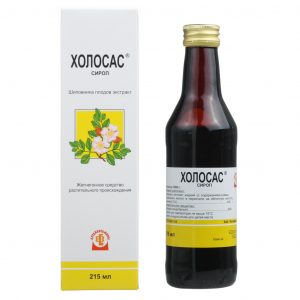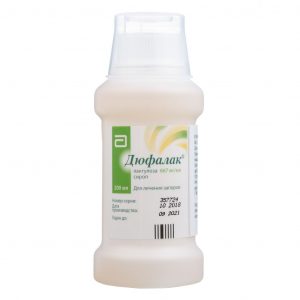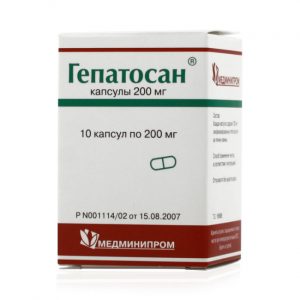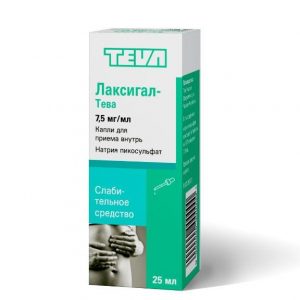Description
packaging 20 pcs
Pharmacological action
Senadexin is a laxative of plant origin (senna leaf or Alexandrian leaf, or cassia leaves).
The pharmacological effect is due to antraglycosides (mainly sennosides A and B), as well as other glycosides. When used internally, senna glycosides pass through the stomach and small intestine unchanged, without being absorbed. In the large intestine, anthraglycosides are broken down by intestinal bacteria into pharmacologically active antrons and anthranols, which irritate the interoreceptors of the colon, increase motility and accelerate bowel movement. Antrons and anthranols interfere with the absorption of water and electrolytes, promote the diffusion of water into the intestinal lumen. Due to the osmotic effect, loosening of feces and an increase in their volume occur, which contributes to the laxative effect of anthraglycosides.
Laxative effect appears in 6 to 10 hours. With prolonged use of the drug, the intensity of its action may decrease due to a decrease in the potassium content in the body.
The drug is well tolerated by patients, due to the low content of resinous substances it does not irritate the intestines.
Indications
Chronic constipation.
Hypo – and atony of the intestine.
Facilitate bowel movement with: Hemorrhoids.
Proct.
Cracks in the anus.
Bowel cleansing before diagnostic and treatment procedures.
Contraindications
Increased individual sensitivity to senna preparations and other components of the drug.
Metrorrhagia.
Paralytic intestinal obstruction.
Acute inflammatory bowel disease: Crohn’s disease.
Ulcerative colitis.
Appendicitis.
Peritonitis.
Peptic ulcer of the stomach and duodenum.
Gastrointestinal bleeding.
Strangulated hernia.
Cystitis.
Pain in the abdomen of unknown genesis.
Severe disturbances in water-electrolyte balance.
Children under 1
Ulcerative colitis.
Appendicitis.
Peritonitis.
Peptic ulcer of the stomach and duodenum.
Gastrointestinal bleeding.
Strangulated hernia.
Cystitis.
Pain in the abdomen of unknown genesis.
Severe disturbances in water-electrolyte balance.
Children under 1
Ulcerative colitis.
Appendicitis.
Peritonitis.
Peptic ulcer of the stomach and duodenum.
Gastrointestinal bleeding.
Strangulated hernia.
Cystitis.
Pain in the abdomen of unknown genesis.
Severe disturbances in water-electrolyte balance.
Children under 1Yes.
Caution: Children under 6 years.
In patients with liver and / or kidney disease.
Use during pregnancy and lactation
The use of the drug in pregnant women is associated with a higher likelihood of side effects (abdominal pain, diarrhea).
At the time of treatment with the drug, breastfeeding is recommended to be stopped, since the components of the drug can pass into breast milk and cause frequent loose stools in the baby.
Composition
1 tablet contains:
Active ingredient: calcium sennosides 20% – 70 mg
Excipients: lactose monohydrate, corn starch, vanillin, magnesium stearate, methyl parahydroxybenzoic acid, niprocalcellic acid, microparic acid, microparic acid, microparic acid, microparic acid, microfluoric acid, microparic acid, microparic acid, microparic acid, microparic acid, microparic acid, cellulose, microfluoric acid)
Dosage and administration of
Senadexin is taken at bedtime. Adults and children over 12 years of age: by -1 -1 lozenge cube or 1-2 tablets. In the absence of effect, the dosage of the drug is increased to 3 tablets per dose (a few days after the first dose). Children 1-6 years old are prescribed 1/3 tablets. Children 6-12 years old – half the adult dosage.
Side effects
Colicky abdominal pain, flatulence with prolonged use (especially in high doses) – loss of feces with electrolytes (mainly potassium), albuminuria, hematuria, deposition of melanin in the intestinal mucosa, nausea, vomiting, diarrhea, obesity , skin rash, convulsions, vascular collapse.
Drug Interaction
With prolonged use or use in high doses, the drug enhances the effect of cardiac glycosides and antiarrhythmic agents due to a decrease in the potassium content of the body impairs the absorption of tetracyclines.
When used with thiazide diuretics, adrenal cortex hormones, licorice preparations, the risk of hypokalemia increases.
Reduces the effectiveness of drugs that are slowly absorbed in the gastrointestinal tract.
overdose
Symptoms: diarrhea can develop with an overdose leading to impaired electrolyte balance.
Treatment: symptomatic. The drug should be discontinued.
Storage conditions
In a dry, dark place, at a temperature not exceeding 20 ° C.
Expiration
2 years.
Deystvuyuschee substances
Sennozyd A and B
pharmacy terms and conditions without a prescription
Dosage form
Dosage form
tablets
Health, Russian




